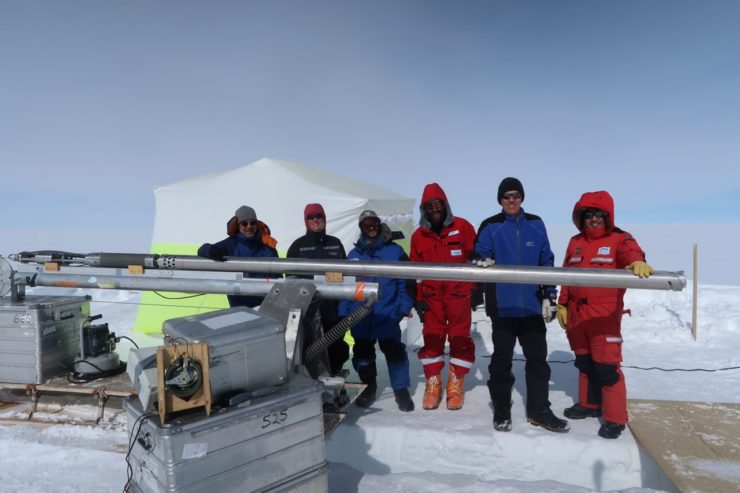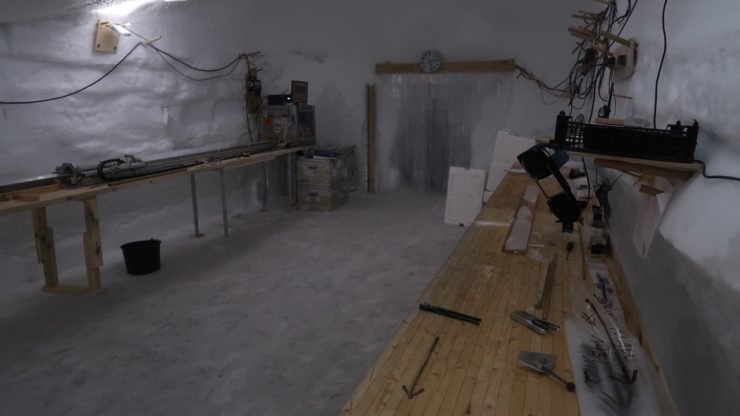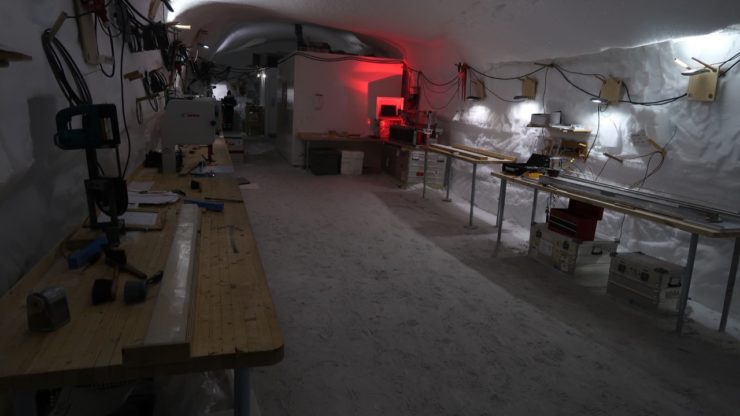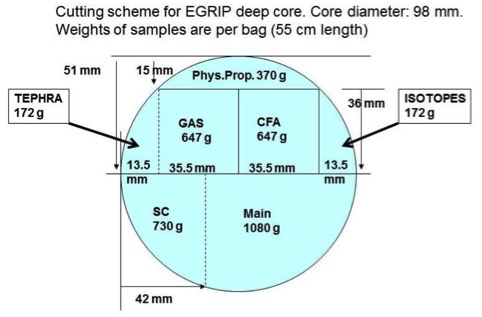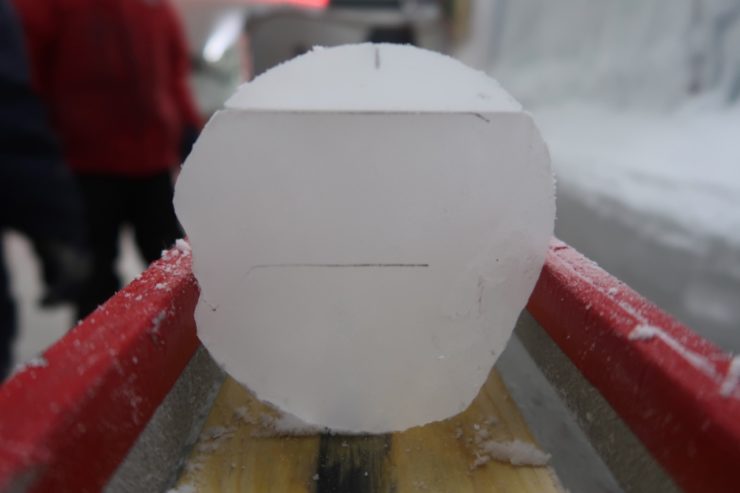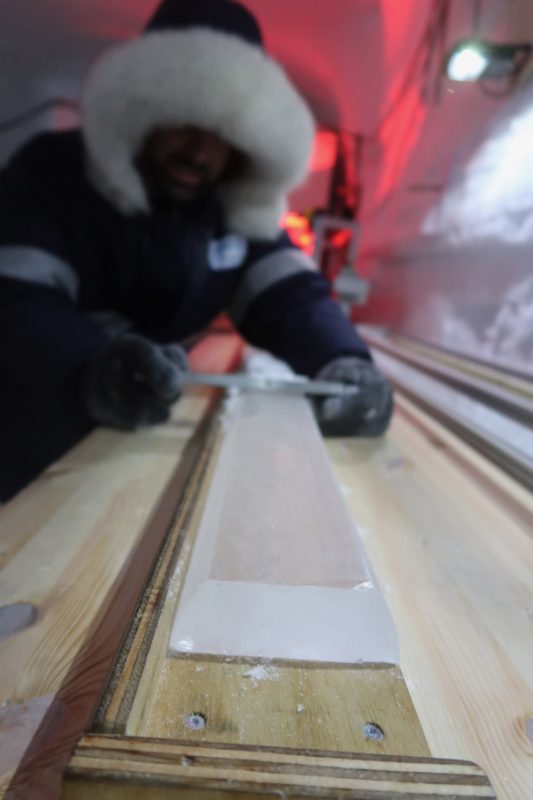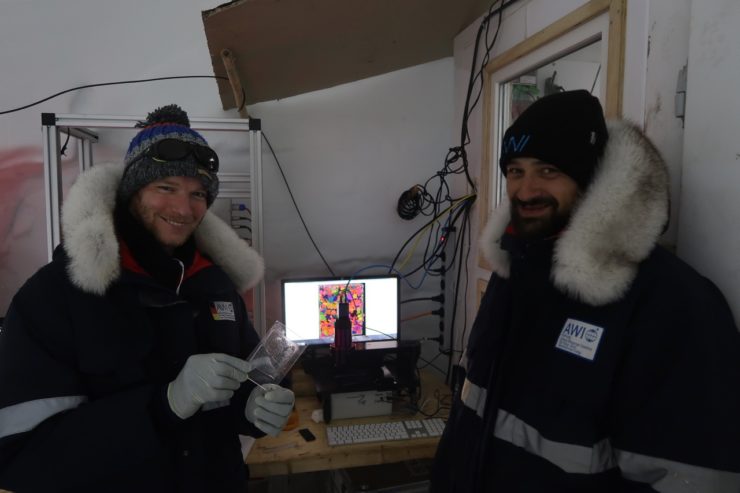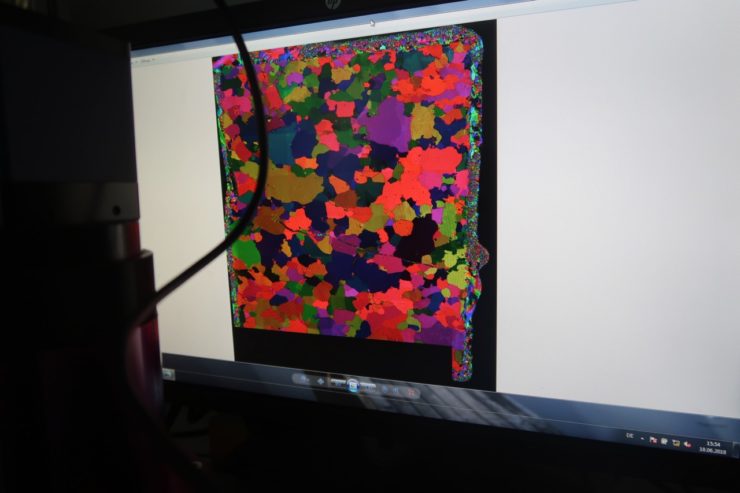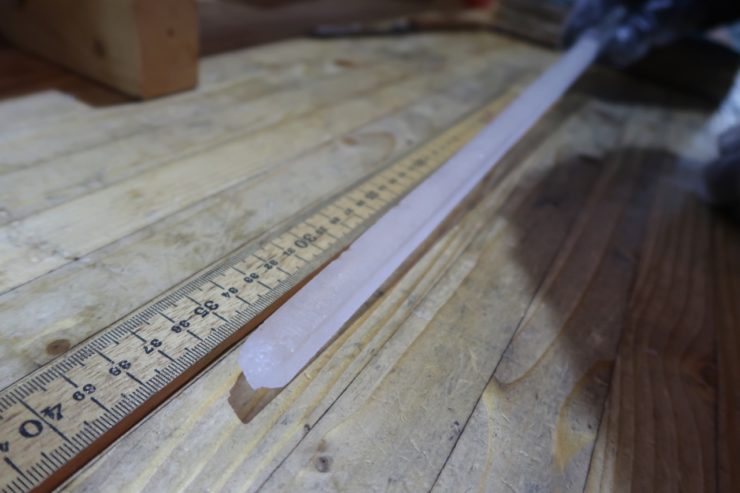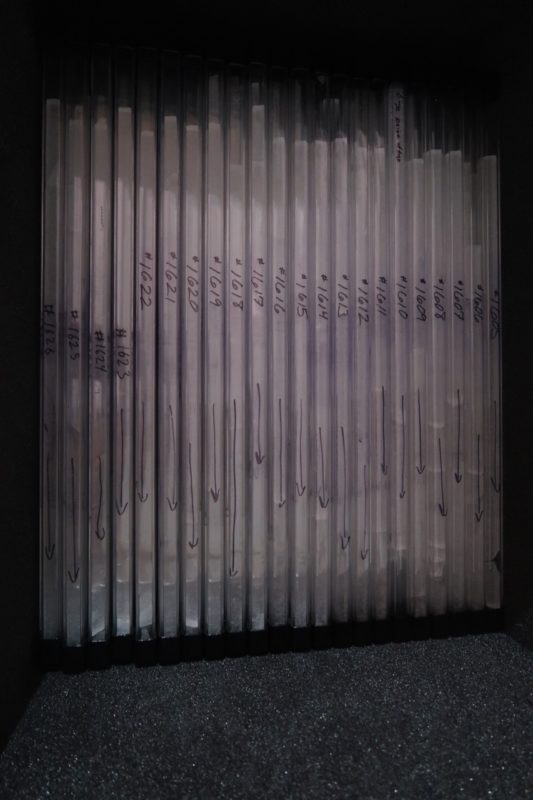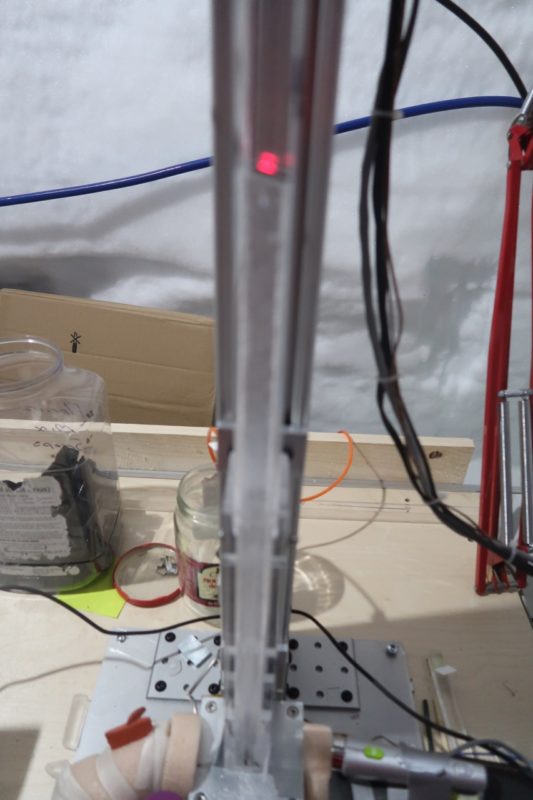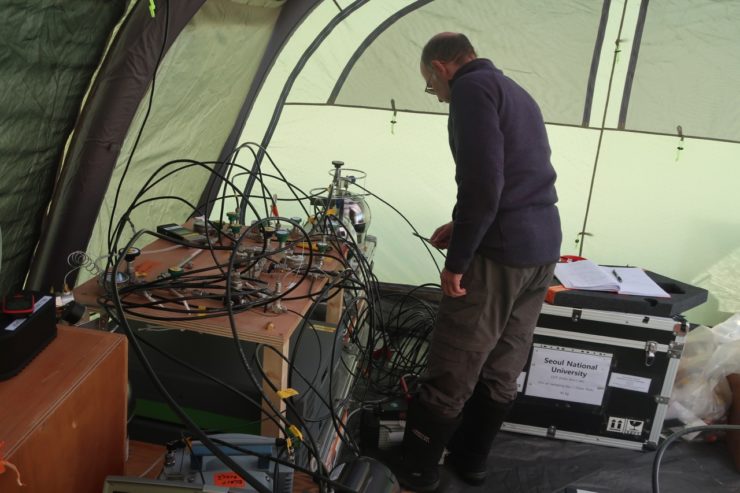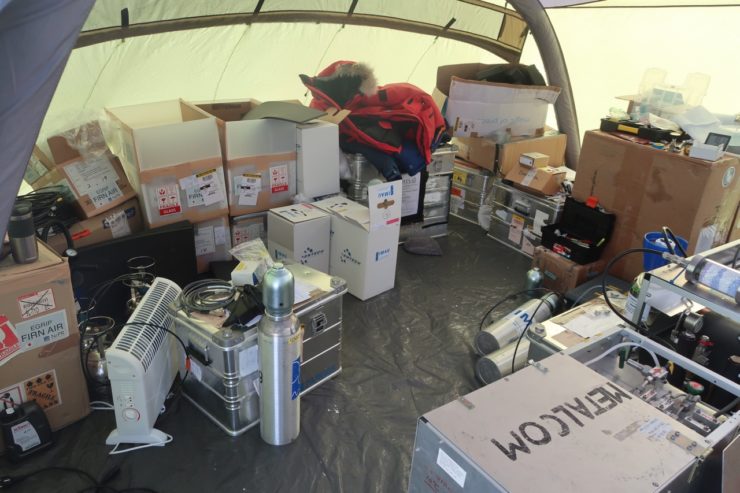Blog
What is done with the deep ice core in camp? + firn air update
Yesterday I wrote about how a deep ice core is drilled, and how difficult it is to collect it when you are already more than 1000 m below the surface. Now I want to tell a little bit about what is done with this ice core while it is still here in the camp. Next to the underground drill trench there is second large underground cave, the science trench, where many different analyses are carried out. Here you see part of it:
The first analysis that is done here is a measurement of electrical conductivity of the ice. What do you get from this analysis? You can deduce how many ions (electrically charged particles) are present in the ice, and this is an indication of large amounts of dust, for example from volcanic eruptions in the past. So this is already very interesting information, and it also helps to compare the new ice core to previous ice cores, which show the same signals from volcanic eruptions.
The other analyses use up the ice, so then the competition starts. Many scientists want to measure each cm of the ice core, so how can you do that? You have to split it into thinner pieces. There is a detailed cutting scheme for the EGRIP ice core that is shown in the following picture:
So after some “non-destructive” measurements the ice core is cut. The names and codes of the different pieces stand for the analyses that are done on these pieces, and I will mention some of them below. I have not had the time to go to the science trench when the cutting actually happens, but here you see some different pieces. You also see that some pieces of ice are broken into many pieces, not like the nice long ice core that I have shown you yesterday. This is characteristic of the so-called “brittle ice”, a zone of several hundred m where the ice breaks very easily. The ice that has been processed in the past weeks was actually drilled last year and left untouched for a year to give it time to relax some strain in the structure, so that it breaks less. Still, you see how many cracks it has, and it is a real puzzle to put the pieces together.
A very thin slice of the “physical properties” piece is analyzed in the science trench to determine the orientation of the ice crystals in the ice core. As you know, when water freezes it forms crystals, and they have a certain symmetry axis. Here, Jan and Ernst-Jan, who do these measurements in the science trench, show a slice of only 300 micrometers thickness (0.3 mm) that has been cut and placed between glass plates. When a special “linearly polarized” light is shining through this layer, the individual crystals transmit different parts of the light, depending on the orientation of their axis. This is shown on the second picture where the different colors show crystals that have a different orientation. From these measurements we can learn how the ice crystals deform and grow under pressure and when the ice sheet is flowing.
Another interesting analysis that people do in the science trench is a “continuous” analysis of the isotopic composition of the ice. If you do now know what isotopes are: … very quickly, most elements, like hydrogen and oxygen, come in different varieties, some are lighter, some are heavier, and these different varieties are called isotopes of the same element. Yes, you can really measure the difference in weight between them, come and visit me in my lab in Utrecht to find out how.
Why do we want to measure the different isotopes? They contain important information on the climate in the past. The relative proportion of the isotopes depends on the temperature on our globe, so with this information we can determine, for example, when we had warm ages and ice ages, and how cold it was during the ice ages. This analysis is really done on every cm of the ice core, using about half of the piece labelled “isotopes” in the above cutting diagram (first photo). Each piece is placed in a holder (second), and then placed vertically on top of a melter (third, the red point is the reflection of a laser light to indicate the top of the ice stick). The melt water at the bottom is collected and continuously analyzed for the isotopic composition. Below you see Valerie and Ji-Woong in the water isotope lab looking at computer screens that show the results of their measurements.
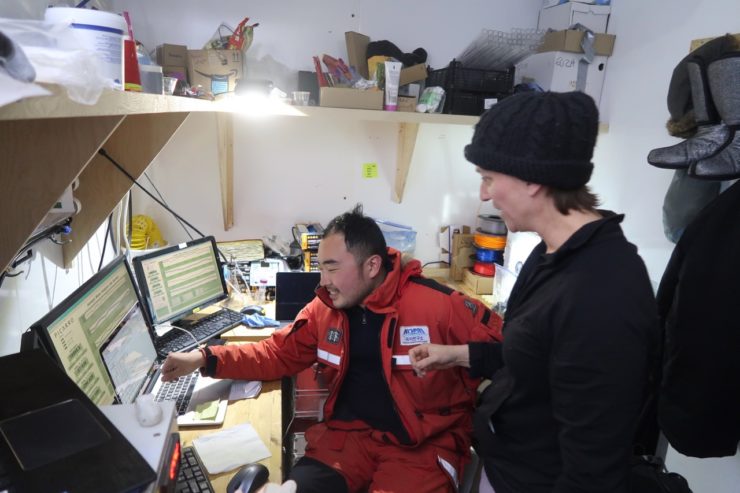 These and several other analyses are done directly here in the EGRIP camp. Other pieces of the ice core are sent to laboratories when the analysis cannot (or does not need to) be carried out here. The “main” piece from the diagram above is distributed between different research groups. It is first sent to the University of Copenhagen and stored in a big freezer there, then the different research groups that participate in EGRIP can apply for different pieces of this ice for analysis in their laboratories.
These and several other analyses are done directly here in the EGRIP camp. Other pieces of the ice core are sent to laboratories when the analysis cannot (or does not need to) be carried out here. The “main” piece from the diagram above is distributed between different research groups. It is first sent to the University of Copenhagen and stored in a big freezer there, then the different research groups that participate in EGRIP can apply for different pieces of this ice for analysis in their laboratories.
Finally a short update of the FIRN AIR SAMPLING:
The last days have been very successful, but also exhausting. We have managed to drill and sample at 3 levels per day, and now we are in the zone where the firn gets more and more compact. The air cannot move and exchange easily anymore and gets older quickly. Today we extracted air that was about 20 years old. We are now in “mass production” mode of filling canisters from the different laboratories in the firn air tent.
On the other hand, the firn gets so dense that we start having difficulties extracting enough air, and we will see how many levels we can still sample before the pores close and the air is locked as bubbles in the ice.
Today was partly a warm day and we are working so hard that the temperature in the tent increased to + 21 ºC. We had to open the doors wide and then we could see the drilling team at work.
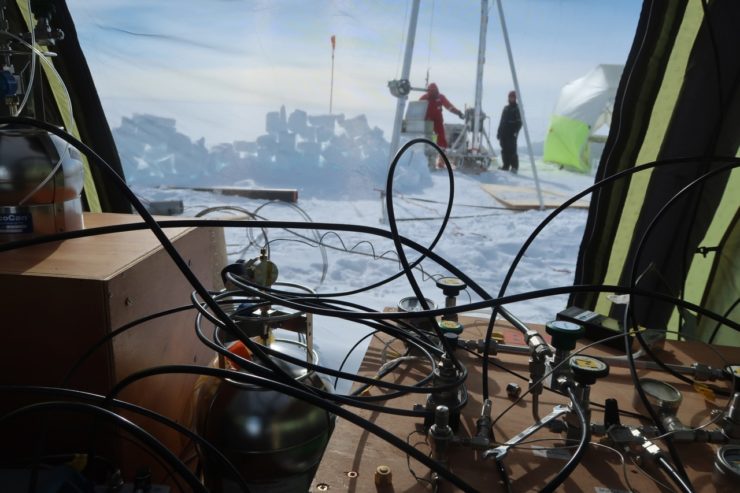 We also had a number of visitors out in the firn air camp, and finally had someone to take a photograph of the firn air team at their main work site.
We also had a number of visitors out in the firn air camp, and finally had someone to take a photograph of the firn air team at their main work site.
